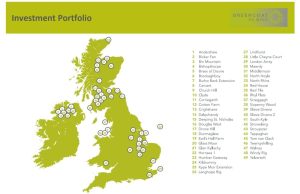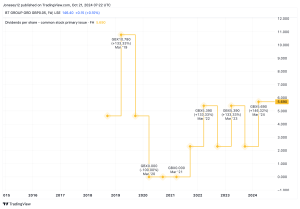In September, the committee at the Bank of England decided to cut interest rates by 0.25%. This is the start of what many believe to be a cutting cycle that could last a couple of years. Such a cycle isn’t new. In fact, history shows us that it’s correlated with the broader economy. Here’s how the FTSE 100 reacted the last time we had multiple rate reductions over an extended period of time.
A flash from the past
The last time we had a sharp fall in the interest rate was in 2008/09. It went from 5% in September 2008 down to 0.5% by April 2009. This was in reaction to the global financial crisis and was designed to try and stimulate demand in the economy.
At the start of September, the FTSE 100 index was at 5,595 points. A year later, it was at 5,120 points. If I fast forward another year, by September 2010 the index was broadly at the same level.
From that case, interest rate cuts didn’t cause the stock market to materially rally in the period that followed. However, there’s a key reason why I see a lot of disclaimers saying that past performance isn’t indicative of future returns.
We’re not in the same position this time around. In 2008/09, the black swan event sparked widespread panic. Right now, we’re in a period of steady (if low) economic growth. The reason for the coming rate cuts is inflation coming under control. The central bank is cutting more from a position of strength than weakness. Therefore, I think the FTSE 100 could rally in the following year, with some sectors really outperforming.
An area I’m focused on
One area that I think could do well is real-estate investment trusts (REITs). These are stocks where an investment manager owns a portfolio of properties. A good example is British Land (LSE:BLND).
Please note that tax treatment depends on the individual circumstances of each client and may be subject to change in future. The content in this article is provided for information purposes only. It is not intended to be, neither does it constitute, any form of tax advice.
This REIT has a dividend yield of 5.27%, with the stock also up 42% over the past year. It owns commercial sites including campuses, retail parks and urban logistic centres. The latest annual report showed that the firm has a loan-to-value ratio of 37.3%. This means that when it looks to buy a new property, 37.3% of the price paid comes in the form of a loan from a bank.
As a result, lower interest rates should reduce the cost of these loans going forward. In turn, this means lower costs for the REIT. If the income from the rent and leases remains the same, overall profit should increase. Further, if interest rates fall and economic growth increases, the demand from tenants should also jump.
One risk is that the stock is starting to look overvalued, with a price-to-earnings ratio of 15.34. This could hamper the extent of further share price gains. Even with this risk, I’ve got the stock on my watchlist.
This post was originally published on Motley Fool







